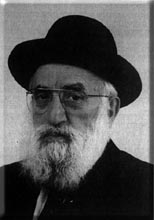Beit Midrash
- Sections
- Peninei Halakha
- Shabbat and Holidays
- Sefirat Haomer
- The Laws of Sefirat Ha'omer
According to Shulĥan Arukh (493:1-2), the customs of mourning begin on the first day of the omer and last until the morning of the 34th. This is based on the tradition that, according to the Gemara, R. Akiva’s students died until pros ha-Atzeret, meaning fifteen days before Shavu’ot. This implies that we must continue mourning until the 34th day of the omer. However, as with the laws of mourning during shiva (the seven-day mourning period for a close relative), a small part of a day is considered like a whole day. Therefore, just as a mourner may terminate his shiva period after starting to mourn for only a short time at the beginning of the seventh day, since he has effectively completed that day, the same applies to the mourning of the omer period: One need not wait until the end of the 34th day. Rather, all customs of mourning cease to apply a few moments after daybreak on the morning of the 34th, because a small part of that day is considered like the whole day.
Despite this, one may sing, play music, and dance on Lag Ba-omer, in honor of the anniversary of R. Shimon bar Yoĥai’s death. However, the other customs of mourning remain binding. Thus, according to this practice, one may not get married or cut one’s hair on Lag Ba-omer, and when the day ends, one may not play music or dance on the night of the 34th. When the morning of the 34th comes, however, all practices of mourning cease to apply. (Those who follow Arizal’s customs act stringently and refrain from cutting their hair until Erev Shavu’ot; see Kaf Ha-ĥayim 493:13.)
Some Sephardic communities – like those from Turkey and Egypt – end all customs of mourning on Lag Ba-omer. Even though most Sephardim in Israel today do not follow this practice, if there is a great need to be lenient on Lag Ba-omer or the night of the 34th, one should consult with a Torah scholar.[3]
[3] The Sephardic custom is elucidated in sa 493:1-2, and we explained its foundations in the previous section (custom 3), based on the meaning of “pros ha-Atzeret,” which means the 34th day of the omer. However, some Sephardic poskim maintain that the customs of mourning end on Lag Ba-omer. Maharikash and R. Yaakov Rakaĥ write in this vein, and Maharikash explains in Erekh Leĥem that pros does not necessarily mean exactly half a month. Sheyarei Knesset Ha-gedola (Hagahot Beit Yosef 493:3) writes that in and around Constantinople, it was customary to get married on Lag Ba-omer. Pri Ĥadash, Nehar Mitzrayim, and others rule similarly. However, the prevalent custom follows sa’s opinion. This can be found in Yeĥaveh Da’at 3:31 and Yabi’a Omer, oĥ 3:26:4. Nonetheless, in pressing circumstances, and when there is potential for monetary loss, there is room to be lenient, provided that a Torah scholar rules that one may do so. R. Ovadia Yosef writes in this vein in Yabi’a Omer 5:38. This leniency applies especially to those who come from places like Turkey, where it is customary to be lenient on Lag Ba-omer. (On the night of the 34th, one may also factor in Ramban’s opinion, namely, that a small part of the night is considered like the entirety of the day; see below, n. 5.)
According to Radbaz and Pri Ĥadash, one who has yet to fulfill the mitzva of procreation need not avoid getting married during this period. Yemenite Jews followed such a custom (Shetilei Zeitim 493:4, Maharitz 2:111). In practice, though, we are not lenient regarding this issue, unless circumstances are pressing, and even then, only in accordance with the ruling of a Torah scholar. (Even Yemenite Jews are not lenient; see Shulĥan Arukh Ha-mekutzar 92:7.)























